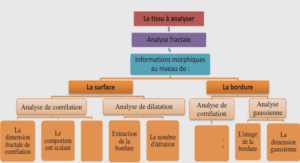Arab immigration to the United States
The Arab American community is made up of numerous people who originally hail from large and diverse geographical regions. They are most often defined by ancestry and national origin. The U.S. census identifies Arab Americans as Americans who can trace their ancestry to the North African countries of Algeria, Egypt, Libya, Tunisia, Morocco and the Western Asian countries of Syria, Yemen, Bahrain, Iraq, Jordan, Lebanon, Kuwait, Palestine, Qatar, Oman, Saudi Arabia and United Emirates Arabs (U.S. Bureau of Census 1990).
The Arab American Institute estimates that approximately 3.5 million Arab Americans live in the U.S. today (Arab American Institute, 2000; retrieved June, 10, 2010). The institute has divided Arab immigration to the U.S. into two major waves; the first started around the 1870s and lastednearly until the beginning of World War II; while the second included immigrants who arrived following World War II and continues to the present day (Shakir, 1997: 124).The two waves differ significantly in terms of cultural, political, socioeconomic, and religious background, and reasons for leaving. All of these factors affected their adaptation to the new country as well as the development of individual/collective identity. These two waves will be discussed in detail in order to provide a historical and contextual backdrop to the lives and experiences of Arab American women today.
The first wave: 1870-Second World War
Many Arab scholars agree that documentation of Arab immigrants during the first wave is precarious (Mehdi, 1978; Naff, 1993; Suleiman, 1999). National borders and political leadership in the Arab world were different in that period from the present day situation and the classification system used by immigrant officials, which was based mainly on race, could not adequately be applied on Arabs who are sometimes considered Blackand sometimes White (Suleiman, 1999). Prior to the end of World War I, Turkey under the Ottoman Empire controlled Syria, Palestine, Iraq, Jordan, Lebanon, much of the Arabian Peninsula, and much of North Africa (Hourani, 1991; Mehdi, 1978). Therefore, those Arabs who immigrated to the U.S. before the end of World War I were classified as Turks and not Arabs. By 1899, immigrant officials realized that some of these Ottoman subjects were Syrian and they added the classification of Syrian. At that time, Greater Syria included present-day Jordan, Palestine, and Lebanon (Naff, 1993: 29).
Although the number of Arab immigrants during this period is difficult to asses, there is enough documentation of the life experiences and the composition of this group. Naff (1993) and Suleiman (1999) reported that this first wave of immigrants consisted primarily of artisans or village farmers who were relatively poor, illiterate and uneducated.Furthermore, these earliest immigrants were mainly young, single, and adventurous Christian men who came from Mount Lebanon, then under the Ottoman occupation of Greater Syria, and had no prior mastery of the English language.These immigrants were viewed as sojourners because their initial motivations were mainly economic; they hoped to earn as much money as possible within the shortest amount of time in order to return to their homes wealthier and prouder. They did not intend to live in America but considered it as transienthome until the situation in the Middle East improved and they could return ―home‖ safe.
Naff and Suleiman also reported that from 1861 to 1915, Mount Lebanon witnessed a time of increasing prosperity and cultural flourishing. They concluded that these early immigrants were not fleeing their home countries because of religious or economic persecution, but rather were attracted by America‘s accelerating urbanization and industrialization.
This earliest group was referred to as ―the pack-peddlers‖ because they found in it a quick way of gaining money and returning to their homelands to purchase more land, marry and open up new businesses. In the U.S., peddlers settled around a supplier, usually from their village in Lebanon. Equipped with two or three suitcases each, they peddled merchandise across towns and cities. These peddlers could be compared to mobile department stores selling clothing, linens, toweling, jewelry, laces, icons, frames, and rosaries (Naff, 1993: 96).Naff further remarks that peddling facilitated the assimilation of these early immigrants because it forced them to learn English and to see the country and experience its way of life.In fact, peddling networks provided opportunities for thousands of newcomers, but more significantly, it spared the early immigrants from a ‗ghetto mentality‘ (29).
By 1910, peddling declined as an immigrant occupation (30). Workers started to look for jobs in factories and mills and many joined the assembly line but opened their own businesses managed by their wives and children. They were attracted by industry‘s payment of five dollars for an eight-hour day, which was initiated during WWI by Ford Motors Company (Naff, 31). As a consequence, a large number of Arabs settled near the Ford Factory in Dearborn. By World War I, official statistics show that there were around 100,000 Arabicspeaking immigrants (24). Arab immigrants established their own (Eastern) churches, an Arabic language-press, and voluntary associations that reflected traditional identity makers and perpetuated the traditional community fragmentation. According to Naff, the most influential factors in shaping their identities were familial and religious affiliations and these prevailed in the Arabic language press and in the formation of clubs and societies (25). Michael W. Suleiman argues that from 1870 to World War I, Arab immigrants thought of themselves as in, but not part of, U.S.‘ society and politics (Suleiman, Arab Americans and the Political Process‘: 38).
Suleiman claims that Arabs were greatly affected by the outbreak of World War I (38). Many Arab community leaders encouraged young man in the US to join the American armed forces ‗to help their new country to liberate their old homeland‘ (5). Community leaders further encouraged Arabs in the US to ‗buy American Liberty bonds to help with war effort‘ (5). Moreover, travel to and from the Middle East became more difficult and dangerous as the major war passages were the sites of naval battles. Greater Syria was divided into four countries after the Sykes-Picot Agreement of 1916 and in 1917, British Foreign Secretary, Arthur James Balfour, made his famous declaration in favor of a Jewish ‗national home‘ in Palestine.
General Introduction |






